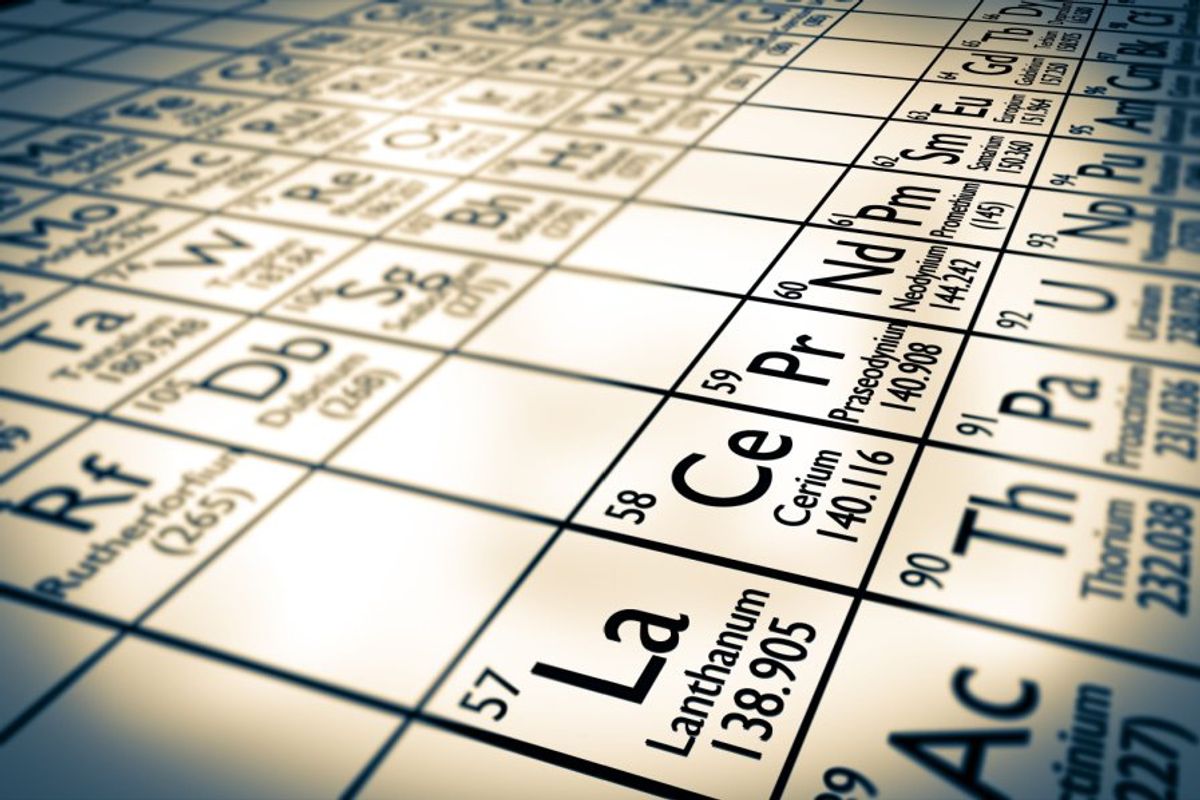Rare Earths Market Update: H1 2023 in Review
What's ahead for the rare earths space? Read on to learn more about the rare earths forecast for 2023.

Rare earths are important elements for reaching the energy transition targets set by governments around the world, with demand expected to be strong in the coming decades.
As a result, these critical metals have increasingly become a trade war pawn between the US and China, which dominates the market. Rare earth elements (REEs) are used in everything from smartphone cameras to defense systems, and are much more prevalent in our day-to-day lives than many may think.
Here the Investing News Network (INN) looks at REE events so far in 2023 and what to expect for the rest of the year.
How did rare earths perform in H1 2023?
Speaking with INN about the REE market in the first six months of the year, David Merriman of Project Blue said he expected to see prices for key magnet rare earths cool off in 2023, with improving supply availability in China.
“Prices for other non-magnetic rare earths have also, as expected, continued a downward trend, though the severity of price declines for lanthanum and cerium has been above expectation,” he said.
In terms of supply, China unsurprisingly remained the world’s top producer in 2022, with output of 210,000 metric tons, according to the US Geological Survey. The US came in second, with production reaching 43,000 metric tons.
Looking at what’s ahead for the second half of 2023, Project Blue’s outlook for REE supply remains roughly unchanged from earlier in the year. “(There are) small markups for production of ionic adsorption clay type ores in Myanmar and Laos, and monazite concentrate from Southeast Asia and Africa,” Merriman said.
Myanmar provides about 40 percent of China’s medium to heavy rare earths feedstock. In fact, China’s imports of rare earths from Myanmar have surged this year, according to customs data, while Laos has also sent some small shipments to China.
That said, Project Blue believes that the role of ionic adsorption clay mining in Myanmar and Laos will have a limited time span because of the poor environmental, social and governance credentials in those countries.
“While the short-term demand outlook will be met by this supply, over the long term Project Blue expects technological developments will need to play a key role to move the magnet rare earths into a sustainable pattern,” Merriman said.
On the demand side, Adamas Intelligence data shows that consumption of neodymium magnets increased just 1.9 percent year-on-year in 2022, with the slowdown caused by global economic headwinds and regional pandemic-related challenges.
“Nevertheless, from 2023 through 2040 we forecast that global demand for neodymium magnets will increase at a CAGR of 7.5 percent, bolstered by double-digit growth from electric vehicle (EV) and wind power sectors, translating to comparable demand growth for the critical REEs (i.e., didymium, dysprosium and terbium) these magnets contain,” the firm states in a report.
Neodymium-praseodymium oxide is used in the production of permanent neodymium magnets, which are employed in the production of EV motors and direct-drive wind turbines.
Commenting on what might be ahead for demand, Merriman said he expects terbium and dysprosium to display the strongest demand growth in 2023, with increases linked to their use in high-performance permanent magnet applications, followed by neodymium and praseodymium and gadolinium.
“Overall rare earth demand is forecast to reach 177,600 tonnes of rare earth oxides in 2023, increasing by roughly 3.5 percent year-on-year,” he added.
Project Blue expects prices for key magnet rare earths to stabilize in Q3 before trending up towards the year's end.
“For non-magnet elements, further downward price pressure is expected,” Merriman said.
What's ahead for the rare earths market in 2023?
When asked which factors to watch out for in the second half of 2023, Merriman said market sentiment in the Chinese domestic EV market, as well as China's H2 production quota announcement, will be important.
Chinese producers must adhere to a quota system for rare earths production. In March, the Asian country set a quota of 120,000 metric tons for the first batch of rare earths mining in 2023, up by about 20 percent compared to 2022.
Overall, the Asian nation is expected to continue playing a crucial role in the REE market. “China has a huge influence on global rare earth pricing, which is unlikely to be challenged by the ‘west’ in the short-term horizon,” Merriman said.
Looking further ahead, prices and demand for rare earth oxides are expected to be robust.
Earlier this year, Adamas Intelligence forecast that, from 2022 through 2035, the value of rare earth oxides consumed by energy transition applications will rise at a CAGR of 19.1 percent, from US$3.8 billion in 2022 to US$36.2 billion in 2035.
“This growth will be led primarily by passenger EV traction motors, which will drive over 50 percent of the value of consumption in 2035, followed by wind power generators, which will propel another 25 percent,” the firm states.
Don’t forget to follow us @INN_Resource for real-time updates!
Securities Disclosure: I, Priscila Barrera, hold no direct investment interest in any company mentioned in this article.
Editorial Disclosure: The Investing News Network does not guarantee the accuracy or thoroughness of the information reported in the interviews it conducts. The opinions expressed in these interviews do not reflect the opinions of the Investing News Network and do not constitute investment advice. All readers are encouraged to perform their own due diligence.
- Rare Earth Elements Prices 101 (Updated 2023) ›
- How to Invest in Rare Earths (Updated 2023) ›
- Top 10 Countries for Rare Earth Metal Production (Updated 2023) ›
- Rare Earth Reserves: Top 8 Countries ›



